- Inside the Armor: Anatomy of a High-Pressure Dredge Hose System
- The Grinding Enemy: Abrasion and Liner Wear in Slurry Transport
- Under Pressure: How Surges and Cyclic Fatigue Cause Catastrophic Bursts
- The Silent Killer: Material Incompatibility and Environmental Stress
- Routing Gone Wrong: The Hidden Cost of Poor Alignment and Support
- Where Connections Fail: End-Fittings, Flanges, and Coupling Weak Points
- Engineering Reliability: Preventive Maintenance as a Measurable ROI Strategy
- The Quality Advantage: Partnering with a Proven Hose Manufacturer
- Turning Prevention into Profit: Executive Takeaways and Next Steps
Dredging hoses are no longer just simple conduits; they’ve become the lifelines of modern marine, energy, and industrial operations. From deepening port channels to handling mine tailings and maintaining municipal waterways, these robust, flexible systems transport abrasive slurries, sand, and silt under extreme hydraulic pressure. Dredging hoses’ durability, flexibility, and performance directly influence the efficiency and success of every dredging or land reclamation project, making them indispensable components in high-stakes environments.
When a single dredge hose fails, the impact extends far beyond the initial repair cost. Operations can come to an abrupt halt, resulting in lost production hours, environmental violations, and significant cleanup costs. A cracked coupling, delaminated liner, or weakened reinforcement layer can cascade into costly downtime and regulatory complications.
For procurement heads, project managers, and decision-makers, understanding the performance and failure behavior of each type of dredging industry hose is critical to optimizing total ownership costs. The goal isn’t just to install equipment, it’s to ensure operational continuity and risk control.
Strategic investment in properly engineered dredging hoses, supported by routine inspection and preventive maintenance, safeguards both productivity and compliance. With the right specification and partner, operators can extend service life, reduce environmental risks, and maintain consistent system efficiency across every high-pressure dredging application.
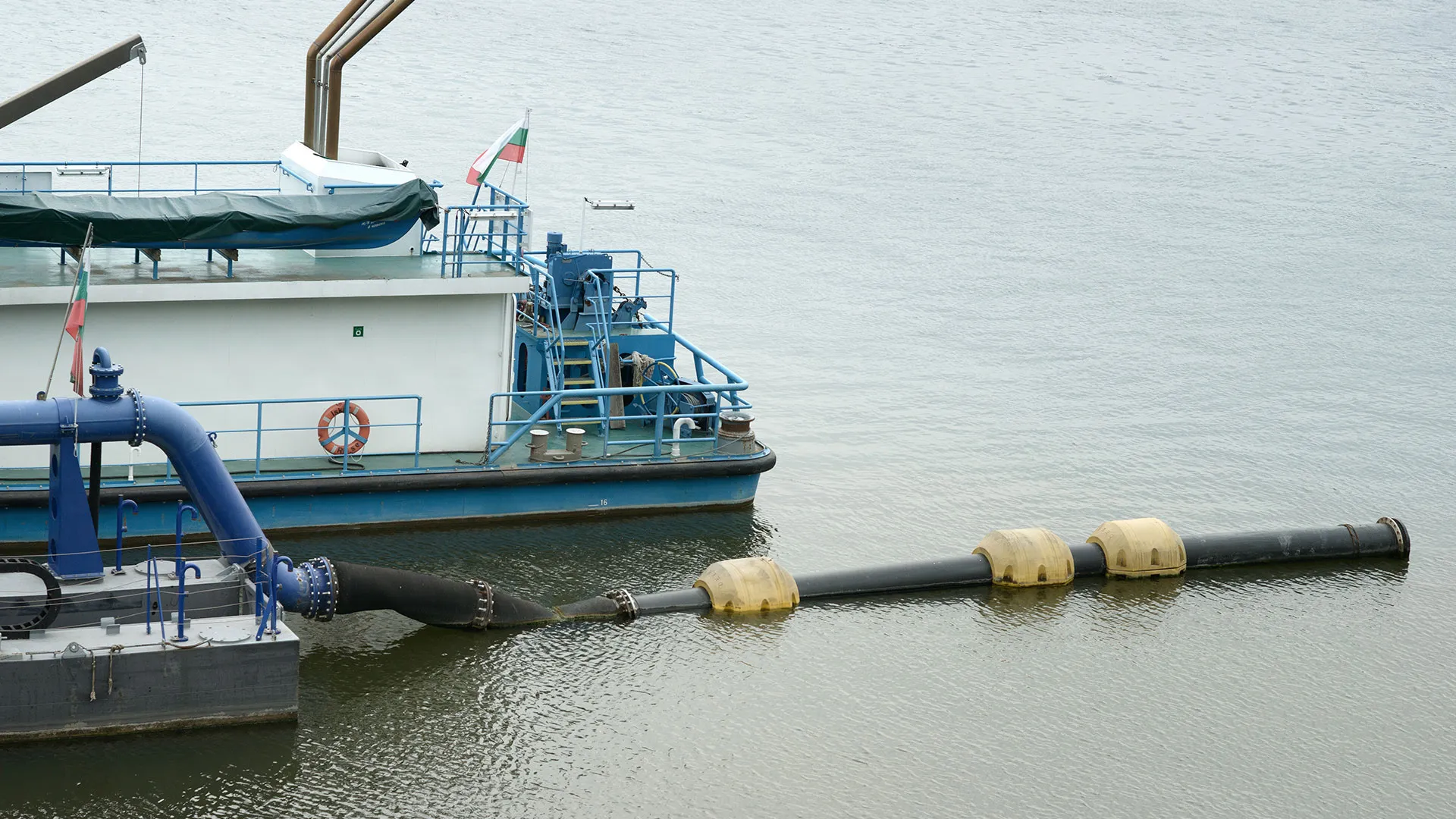
Inside the Armor: Anatomy of a High-Pressure Dredge Hose System
A high-pressure dredge hose is far more than a simple pipe; it is a precision-engineered system built to endure the harsh realities of dredging, mining, and industrial slurry transport. Each unit integrates multiple specialized layers, each serving a critical mechanical and protective function.
The inner liner protects the slurry from abrasion caused by sharp solids and coarse particles, while reinforcing layers, usually made of high-tensile textile or steel wire, provide structural strength against internal pressure and external stress. The outer cover protects the assembly from UV radiation, grease, ozone, and weathering. Furthermore, couplings and fittings maintain sealing integrity under changing pressures, while floats or supports guarantee routing stability and buoyancy in maritime or floating systems.
High-performance dredging hoses are intended to strike a compromise between flexibility and durability. Wall thickness, reinforcing design, and rated working pressure all affect durability in abrasive and high-pressure applications. As Anaconda Pipe & Hose points out, accurate selection of wall thickness and reinforcing layers reduces fatigue and increases service life.
When each component from the hose body to the clamps works in coordination, the result is a dredging industry hose that performs reliably under pressure. Properly engineered dredging hoses safeguard uptime, maintain consistent flow, and reduce operational risks in continuous-duty dredging environments.
The Grinding Enemy: Abrasion and Liner Wear in Slurry Transport
Abrasion is by far the greatest, persistent, and destructive hazard to dredging hoses. The high-velocity flow of sand, gravel, silt, and shell pieces constantly grinds against the inner lining, progressively weakening it until the reinforcing layers become visible. Over time, this erosion degrades structural integrity, resulting in leaks or unexpected failures during operation.
Reduced wall thickness, vibration, inconsistent discharge pressure, and variable flow rates are visible symptoms of liner deterioration. If not handled, internal scouring can cause the dredge hose to burst, resulting in unanticipated downtime, environmental hazards, and costly replacement.
Preventive action starts with selecting abrasion-resistant materials specifically designed for high-solids slurry. Wall-thickness monitoring through ultrasonic testing or caliper checks allows operators to track wear progression. As Anaconda Pipe & Hose recommends, using slurry-rated dredging hoses with reinforced natural rubber or synthetic linings can significantly extend service life and maintain consistent flow performance.
Regular inspection and timely replacement schedules transform maintenance from reactive to predictive. By monitoring liner condition, operators ensure that each dredging industry hose remains efficient, reducing frictional loss, conserving energy, and maximizing operational uptime, delivering measurable ROI for dredging and mining operations alike.
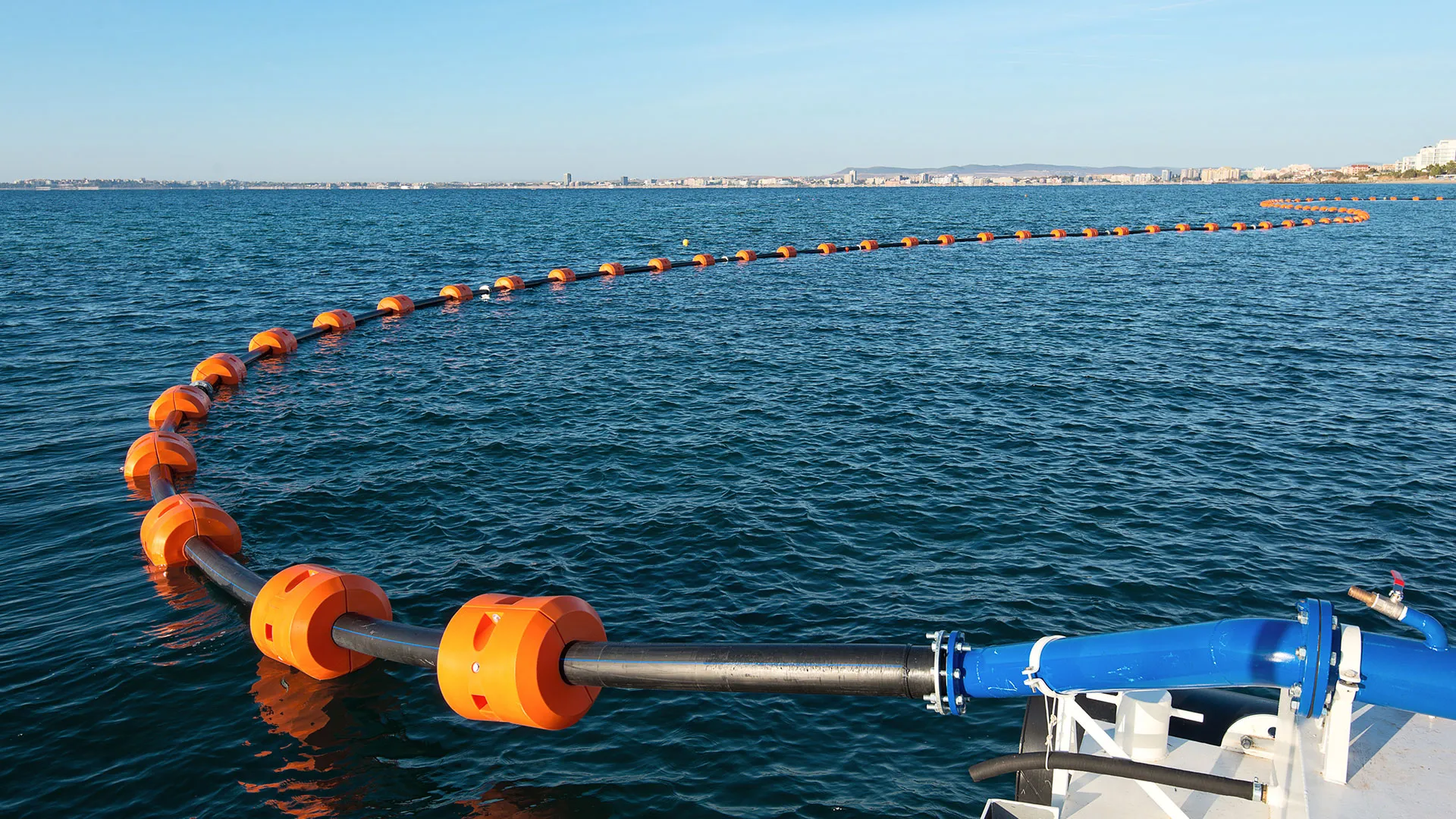
Under Pressure: How Surges and Cyclic Fatigue Cause Catastrophic Bursts
While abrasion degrades from inside over time, pressure surges can completely ruin dredging hoses in an instant. Internal pressure might temporarily quadruple at pump starting, shutdown, or sudden valve shuts, putting significant stress on the hose’s reinforcing layers. These fast oscillations often lead to bulging, cracking, or even catastrophic rupture, threatening both people and nearby equipment.
The dredging industry hose runs continuously in a dynamic pressure environment. Pump pulsations, flow reversals, and changing loads all contribute to cyclic fatigue, which eventually deteriorates the internal structure. Localized swelling, wire exposure, and microcracks around coupling locations are early warning signs of impending failure if left unchecked.
Preventive measures include using dredging hoses designed for surge resistance, including pressure-release valves, and scheduling periodic hydrostatic testing to ensure structural integrity. According to research conducted by renowned manufacturers like as Orientflex, appropriate design, strengthening, and testing may increase hose fatigue life by up to 40%.
By selecting high-safety-factor dredging hoses and adhering to predictive testing protocols, project managers can prevent catastrophic bursts. These proactive measures safeguard operational continuity, reduce costly downtime, and ensure personnel and equipment remain protected under even the harshest dredging conditions.

The Silent Killer: Material Incompatibility and Environmental Stress
Material incompatibility is one of the most overlooked but serious reasons for the failure of dredging hoses. When a hose is subjected to media or environmental conditions it was not designed to withstand, deterioration can develop quickly, jeopardizing performance and safety. Saltwater corrodes metallic components, hydrocarbons weaken or expand rubber liners, and high heat or cold can cause embrittlement and cracking.
For example, using a standard rubber dredge hose in offshore oil or chemical transfer applications often causes scorching, softening, and delamination. Similarly, continuous UV exposure and temperature cycling can damage the hose cover, resulting in microcracks and premature aging. These flaws gradually erode structural integrity, increasing the likelihood of leaks or pressure-related explosions.
Preventive strategies start with proper material selection and environmental analysis. Conducting compatibility audits, specifying chemical- and UV-resistant materials, and adding abrasion or thermal protection are essential. Both Anaconda Pipe & Hose and Sincopipe emphasize that a well-engineered dredging hoses are precisely matched to its intended application and environment.
For example, using a standard rubber dredging hose in offshore oil or chemical transfer applications often results in scorching, softening, and delamination. Similarly, continuous UV exposure and temperature cycling can damage the hose cover, resulting in microcracks and premature aging. These flaws gradually erode structural integrity, increasing the likelihood of leaks or pressure-related explosions.

Routing Gone Wrong: The Hidden Cost of Poor Alignment and Support
Even the most durable dredging hoses can fail prematurely when installed or routed incorrectly. Improper alignment, such as excessive bending, twisting, or insufficient support, creates concentrated stress points that gradually fatigue reinforcement layers and weaken structural integrity. These issues often go unnoticed until they result in flow restrictions, leaks, or complete hose failure under pressure.
Excessively short hoses tend to exceed their intended length, putting unnecessary strain on fittings and couplings. In contrast, overly long dredging hoses might kink, collapse, or scrape against surrounding equipment, accelerating external wear and reducing flow efficiency. These circumstances not only reduce hose life but also jeopardize safety and overall system effectiveness.
Maintaining the minimum bend radius specified by the hose manufacturer for the dredging industry hose is acceptable engineering practice. The use of properly positioned floats, clamps, and flexible supports decreases vibration and prevents sagging or abrasion from contact. Crew training is also vital; installers must be able to recognize poor routing conditions and make timely modifications.
When fitted according to manufacturer specifications, each dredge hose works within its design limitations, resulting in steady flow, decreased fatigue, and longer service intervals. Proper routing is more than simply an installation detail; it is a key aspect in long-term operating reliability.

Where Connections Fail: End-Fittings, Flanges, and Coupling Weak Points
Even with correctly specified dredging hoses, the majority of system leaks and failures occur at the connection points. End-fittings, flanges, and couplings are subjected to significant mechanical stress, pressure surges, and vibration, all of which can expose weaknesses if not properly installed or maintained. Issues such as over- or under-torqued bolts, damaged seals, or inconsistent crimping can create vulnerabilities that lead to sudden rupture or gradual seepage.
Common symptoms of impending failure include flange distortion, gasket wear, and coupling pull-out under load. These signs are particularly critical in marine and offshore applications, where dredging hoses must withstand constant movement and fluctuating pressure. A single compromised joint can interrupt operations, cause environmental contamination, or result in costly emergency repairs.
Quality assurance is the first step in preventive actions. Every dredge hose assembly should undergo factory testing under controlled pressure and alignment circumstances. Using approved couplings, careful torque application, and properly aligned flanges ensures a secure, leak-free connection.
By sourcing pre-tested and documented dredging industry hose assemblies from trusted suppliers such as Anaconda Pipe & Hose, procurement teams gain full traceability, ISO-compliant certification, and long-term reliability advantages that field-assembled alternatives simply cannot match.
Engineering Reliability: Preventive Maintenance as a Measurable ROI Strategy
A structured maintenance program turns reliability from assumption into measurable performance. For high-pressure dredging hoses, consistency is the foundation. Inspect, document, and intervene before a problem becomes a failure. Preventive maintenance not only protects equipment but also safeguards uptime, safety, and environmental compliance.
A robust framework for maintaining dredging hoses should include:
- Inspection schedules for visual signs of damage, cuts, bulges, or cracks.
- Wall-thickness monitoring to track internal liner erosion.
- Coupling verification to ensure proper torque, alignment, and sealing.
- Flow-rate and pressure tracking to detect blockages or irregular wear.
Engineers can precisely estimate when a dredge hose will reach the end of its operating life by using condition-based monitoring technologies such as pressure sensors and vibration analysis. According to Anaconda Pipe & Hose, proactive inspection programs are far less expensive than emergency repairs, spill mitigation, or downtime recovery.
Systematic preventative maintenance ensures that all dredging industry hoses operate safely and effectively throughout their service lives. This comprehensive strategy increases equipment longevity, improves resource allocation, and generates demonstrable ROI by decreasing unexpected downtime and total cost of ownership.
The Quality Advantage: Partnering with a Proven Hose Manufacturer
Choosing the right manufacturing partner is just as crucial as choosing the correct dredging hoses. A specialized supplier doesn’t simply deliver hardware; it provides engineering expertise, quality assurance, and lifecycle reliability. Partnering with a proven dredging industry hose manufacturer ensures that every product is purpose-built to meet demanding operational, environmental, and safety standards.
A qualified dredging industry hose vendor conducts extensive hydrostatic, impulse, and vacuum testing to ensure structural integrity at real-world forces. Each assembly is traceable, supported by ISO-certified paperwork, and material quality tested. This high level of precision reduces field risk and simplifies compliance for procurement teams working on government, military, or industrial projects.
Working with Anaconda Pipe & Hose offers clients access to decades of expertise in dredge hose design, wall-thickness optimization, and lifecycle planning. Every unit is factory-tested, ensuring superior performance in the toughest dredging, mining, and marine environments.
For decision-makers, investing in premium dredging hoses from a reputable manufacturer means more than durability; it represents a commitment to operational excellence. The result is fewer equipment failures, safer worksites, lower total ownership costs, and sustained performance across every phase of the dredging process.
Turning Prevention into Profit: Executive Takeaways and Next Steps
Failures in dredging hoses are not a matter of chance; they’re a result of overlooked maintenance and improper design practices. The good news is that every failure mode can be anticipated and prevented with the right strategy. By identifying early warning signs and implementing structured preventive maintenance, leaders can significantly reduce unplanned downtime, ensure environmental compliance, and extend the lifespan of critical assets.
The return on investment is tangible. Companies that value health have fewer emergency replacements, safer operations, and lower maintenance costs. When executives view their dredge hose systems as long-term assets rather than disposable components, they create quantitative value via dependability, efficiency, and brand reputation.
Partnering with Anaconda Pipe & Hose ensures every dredging industry hose is engineered to perform under extreme conditions. Each assembly is pressure-tested, certified, and documented to meet the highest safety and compliance standards for demanding dredging, mining, and marine projects.
For project managers, engineers, and procurement leaders seeking operational continuity, investing in premium dredging hoses assemblies delivers sustained ROI. Anaconda Pipe & Hose provides expert consultation, system evaluation, and custom-made dredging hoses built to deliver maximum performance, safety, and profitability in every high-pressure dredging application.


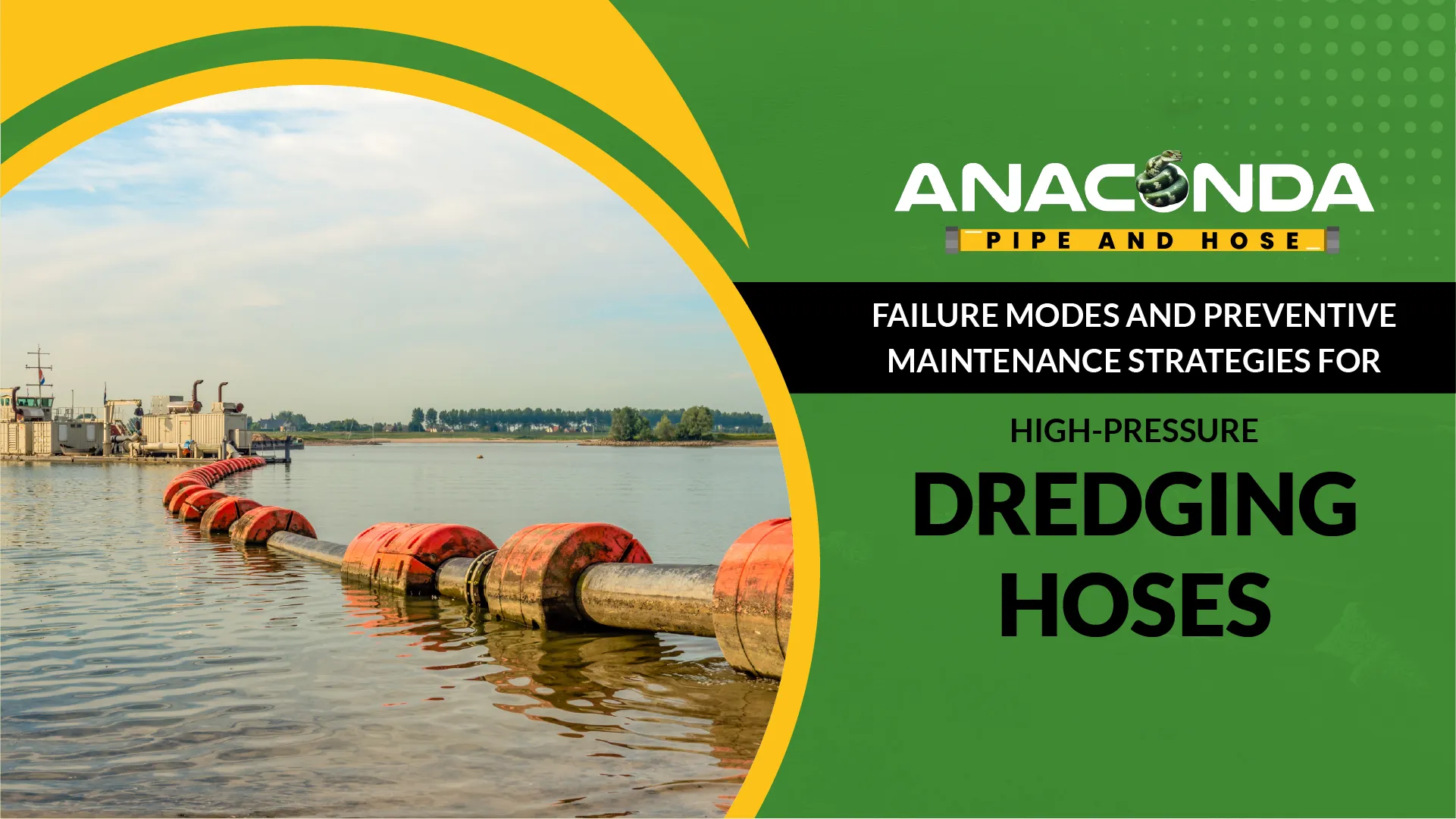

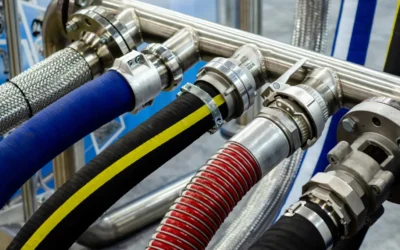
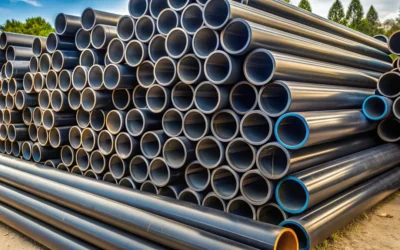

0 Comments